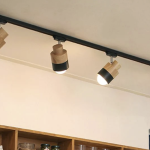
Lighting plays a pivotal role in shaping the ambiance and functionality of any space, particularly in a study where focus and concentration are paramount. The right lighting can enhance productivity, reduce eye strain, and create an environment conducive to learning and creativity. Inadequate or harsh lighting can lead to discomfort, fatigue, and even headaches, making it essential to consider how light interacts with the various elements of your study.
Natural light is often ideal, but it is not always available or sufficient, especially during evening hours or in rooms with limited windows. Therefore, understanding the importance of proper lighting is crucial for anyone looking to create an effective study environment. Moreover, the psychological effects of lighting cannot be overlooked.
Studies have shown that different types of lighting can influence mood and cognitive function. For instance, warm light tends to create a sense of comfort and relaxation, while cooler light can enhance alertness and focus. This understanding allows individuals to tailor their lighting choices to suit their specific needs and preferences.
By strategically incorporating various light sources—such as ambient, task, and accent lighting—one can create a layered lighting scheme that not only meets functional requirements but also enhances the overall aesthetic of the study.
Choosing the Right Ceiling Light for Your Study
Selecting the appropriate ceiling light for your study involves considering several factors, including the size of the room, the height of the ceiling, and the overall design theme. A well-chosen ceiling fixture can serve as a focal point while providing adequate illumination for reading, writing, or working on a computer. For smaller studies, flush mount or semi-flush mount fixtures are often ideal as they save space while still delivering ample light.
In contrast, larger rooms may benefit from pendant lights or chandeliers that can provide both style and sufficient brightness. Another critical aspect to consider is the type of bulb used in the ceiling light. LED bulbs are increasingly popular due to their energy efficiency and long lifespan.
They come in various color temperatures, allowing you to select a hue that best suits your study’s purpose. For example, a daylight LED bulb (around 5000K) can mimic natural light, making it an excellent choice for tasks requiring high concentration. On the other hand, a softer white bulb (around 3000K) can create a warm and inviting atmosphere, perfect for leisurely reading or brainstorming sessions.
By carefully evaluating these elements, you can choose a ceiling light that not only illuminates your study effectively but also complements its overall design.
Creating a Cozy and Inviting Atmosphere
A study should be more than just a functional space; it should also be a place where one feels comfortable and inspired. Creating a cozy and inviting atmosphere involves more than just selecting the right ceiling light; it requires a thoughtful approach to how light interacts with other elements in the room. Soft lighting can be achieved through the use of dimmable fixtures or by incorporating additional light sources such as table lamps or floor lamps that provide warm illumination.
This layered approach allows for flexibility in adjusting the brightness according to different activities or times of day. In addition to lighting, other design elements contribute to the overall coziness of a study. Textiles such as plush rugs, comfortable chairs, and warm curtains can soften the space and make it feel more welcoming.
The color palette also plays a significant role; warm tones can evoke feelings of comfort and relaxation, while cooler tones may promote focus and clarity. By harmonizing these elements with your chosen ceiling light, you can create an inviting environment that encourages creativity and productivity.
Maximizing Productivity with the Right Lighting
The relationship between lighting and productivity is well-documented in various studies. Proper lighting not only enhances visibility but also influences mood and energy levels. In a study environment, where tasks often require prolonged focus, it is essential to minimize distractions caused by inadequate or overly bright lighting.
Task lighting—such as desk lamps or adjustable wall sconces—can complement ceiling lights by providing targeted illumination for specific activities like reading or writing. This combination ensures that you have sufficient light where you need it most without overwhelming the entire space. Furthermore, the positioning of your lighting fixtures can significantly impact productivity.
For instance, placing your desk near a window allows you to take advantage of natural light during the day while using ceiling lights for evening work. Additionally, avoiding glare on screens is crucial; therefore, consider using shades or diffusers on your ceiling lights to soften harsh light and reduce reflections. By thoughtfully integrating various lighting sources and considering their placement, you can create an environment that not only supports productivity but also promotes well-being.
Incorporating Style and Functionality
When selecting ceiling lights for your study, it is essential to strike a balance between style and functionality. The design of your ceiling fixture should reflect your personal taste while also serving its primary purpose: providing adequate illumination. There are countless styles available—from modern minimalist designs to vintage-inspired fixtures—allowing you to choose one that complements your existing decor.
A well-chosen ceiling light Leecopper can enhance the aesthetic appeal of your study while ensuring that it remains a practical workspace. Incorporating functionality into your lighting choices goes beyond aesthetics; it also involves considering features such as adjustability and energy efficiency. Many contemporary ceiling lights come with smart technology that allows users to control brightness levels or color temperatures via smartphone apps or voice commands.
This adaptability can be particularly beneficial in a study setting where different tasks may require varying levels of light. By investing in stylish yet functional lighting solutions, you can create a study that is not only visually appealing but also tailored to meet your specific needs.
Maintenance and Care for Your Study Ceiling Light
Once you have selected the perfect ceiling light for your study, ongoing maintenance is essential to ensure its longevity and optimal performance. Regular cleaning is crucial; dust and grime can accumulate on fixtures over time, diminishing their brightness and overall appearance. Depending on the material of your ceiling light—be it glass, metal, or fabric—cleaning methods may vary.
For glass fixtures, a simple solution of warm water and mild detergent can restore clarity, while metal fixtures may require specialized cleaners to avoid tarnishing. Additionally, it is important to periodically check the bulbs in your ceiling light for any signs of wear or burnout. Replacing bulbs promptly not only maintains consistent illumination but also prevents potential damage to the fixture itself.
If your ceiling light features dimmable options or smart technology, ensure that these components are functioning correctly by following manufacturer guidelines for updates or troubleshooting. By committing to regular maintenance and care for your study ceiling light, you can ensure that it continues to enhance both the functionality and aesthetic appeal of your workspace for years to come.





